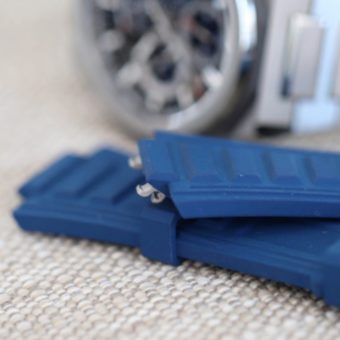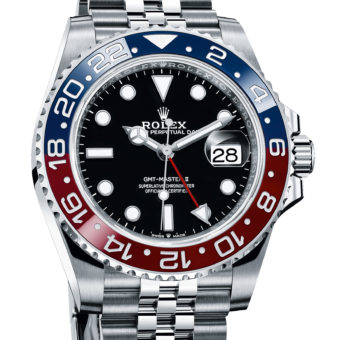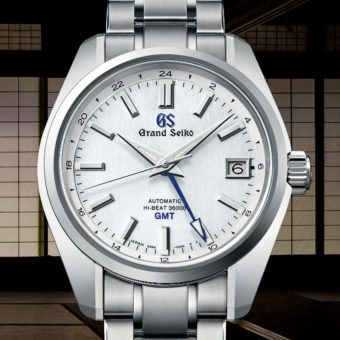In many cultures in East Asia the 60th birthday signifies new beginnings and a moment of rebirth. The Japanese embrace the tradition of Kanreki, which literally means your years completed in a circle and symbolizes a return to the time you were born. Grand Seiko turns 60 this year and boy, its watchmakers have taken this reinvention business very seriously indeed.

After introducing a new escapement that riffs on the direct impulse escapement (Ref. SLGH002) earlier this year, Grand Seiko this month unveiled a concept constant-force tourbillon movement it calls the T0 (that’s tee-zero). This isn’t the first tourbillon from the House of Seiko; that would be the Credor Fugaku tourbillon from 2016. Nor is this the first wristwatch to combine a remontoire (a constant-force mechanism) and a tourbillon, but this is a first for Grand Seiko and the brand claims that this is the only time a remontoire and a tourbillon have been brought together on the same axis.
In a sense, this is a continuation of Grand Seiko’s original pursuit of creating the world’s most accurate wristwatch. Back in 1960, Grand Seiko was born out of parent company Seiko’s quest to create “the ideal watch” — a beautifully handcrafted timepiece that would be durable, legible and possessing higher chronometric standards than Swiss watches. By the end of the decade, Grand Seiko mechanical movements had swept the top spots at chronometry competitions held by the Neuchâtel and Geneva Observatories.

Before we go any further – a quick primer on these two haute horlogerie mechanisms. The remontoire (or remontoir d’égalité) is a spiral spring placed on one of the gear train wheels to ensure that the escapement gets a constant supply of power as long as there’s juice in the mainspring barrel. This helps keep the amplitude of the balance spring constant for precision timekeeping. A tourbillon works on the principle that if the balance is in constant rotation, the effects of gravity on the accuracy of the movement can be negated. In effect both of these mechanisms, which are extremely hard to engineer and assemble, serve in the interest of accurate timekeeping. The Tourbillon Souverain from F.P. Journe in 1999 was the first wristwatch to bring together these two devices.
According to Grand Seiko, the product development team that worked on creating the Caliber 9SA5 used in the SLGH002 worked simultaneously on the T0 constant-force tourbillon as well. The movement was designed by Takuma Kawauchiya. While in most arrangements, the remontoire is placed away from the escapement because it’s easier to control the torque from the mainspring, Kawauchiya found that this wasn’t the most energy-efficient way to do things. So if you pay close attention, you’ll see two blued titanium carriages — one that is part of the tourbillon, the other connected to the wheel that winds the remontoire spring, which is recharged every second. Thus, one of the three-armed carriages moves around in one-second increments around its own axis.

The escapement is fed via barrels simultaneously as opposed to in series. The power reserve is 72 hours and, according to an article on the brand’s website, “a high accuracy was maintained for 50 hours out of 72 hours due to the constant-force.” The gear train uses components made from Seiko’s MEMS (Micro Electrical Mechanical System) technology. This was initially used on Seiko’s high-beat (5 Hz) movements; though more precise than slow-beating movements, there are few challenges associated with its development. For example, it consumes a lot more energy and the escapement wears out quickly due to increased friction.
To solve this problem Seiko turned to MEMS technology hitherto used in the semiconductor fabrication. This process produces components that are lighter and more durable with a smoother surface. Though only the escape wheel and pallet fork were made using MEMS technology in the regular production models, the T0 has most of its gears made using this method.

Since the movement is based on the Caliber 9S65, the balance wheel oscillates at 4 Hz (28,800 vph), which may be the normal for modern mechanical watches, but not for those with a remontoire and tourbillon. The components of the movement are supposedly hand-finished to Grand Seiko’s exacting standards. Still in the concept stage, it may be a while longer before the T0 appears in a production timepiece, but those visiting the Grand Seiko Shizukuishi studio in Morioka (once the Covid-19 restrictions are lifted) can get a glimpse of this new movement.
A version of this article by Nitin Nair first appeared on our sister website, WatchTime Middle East.







I don’t get it!
Tourbillon in Seiko??9/12/20
I would like to see that!!